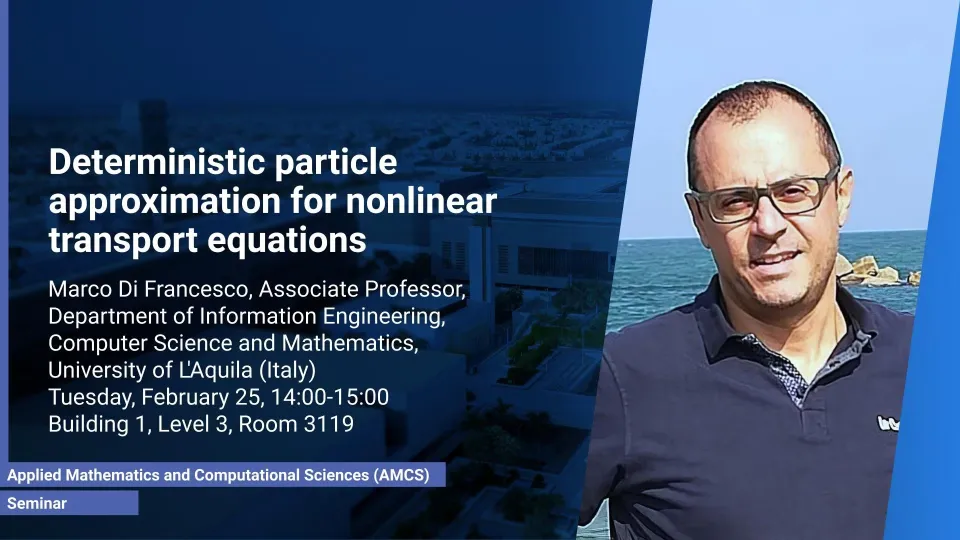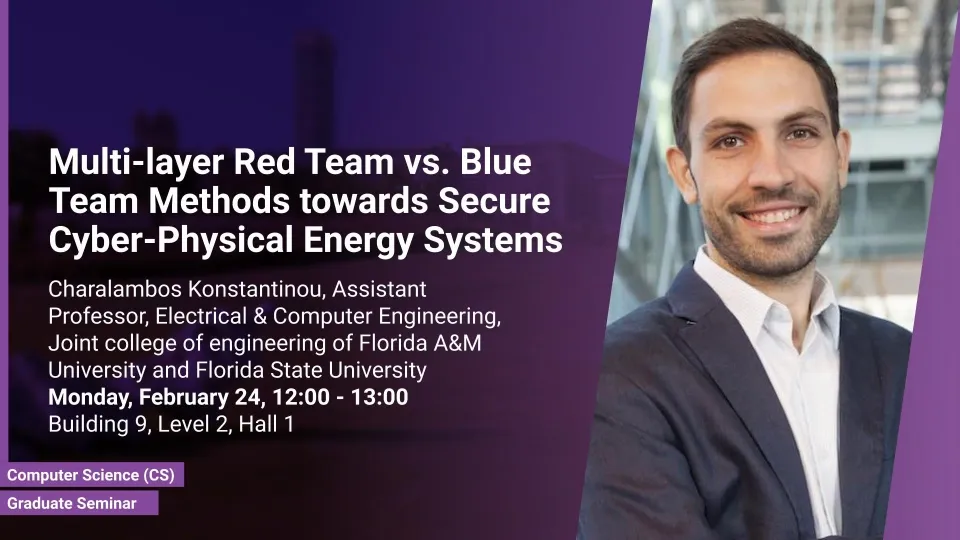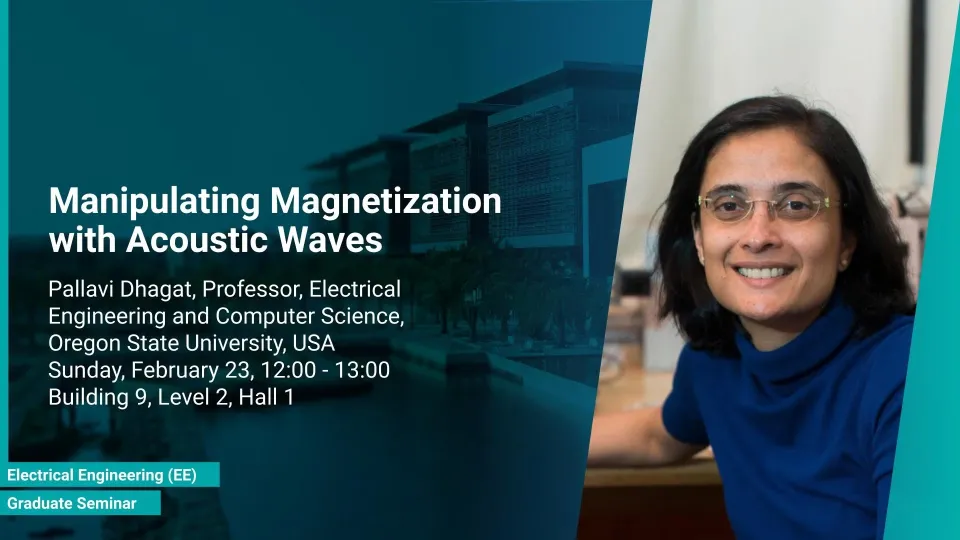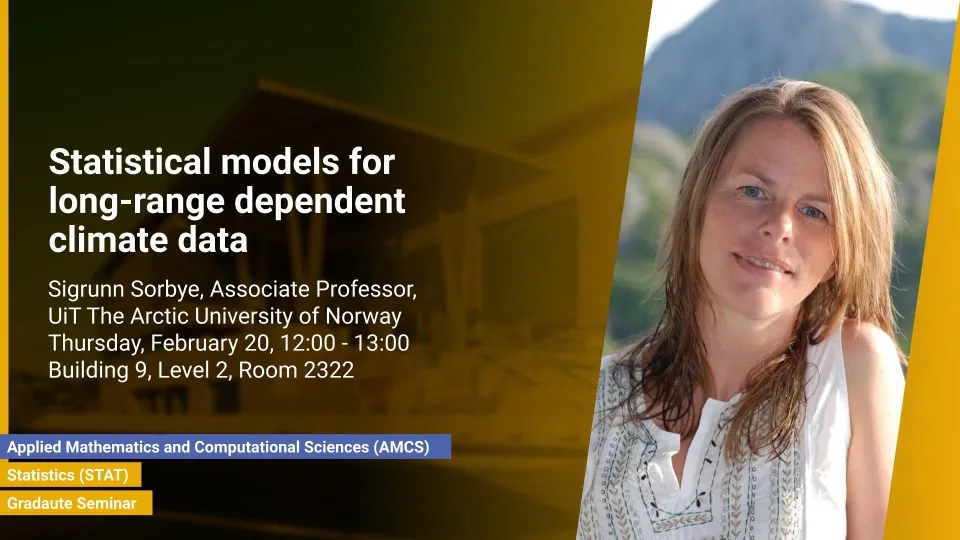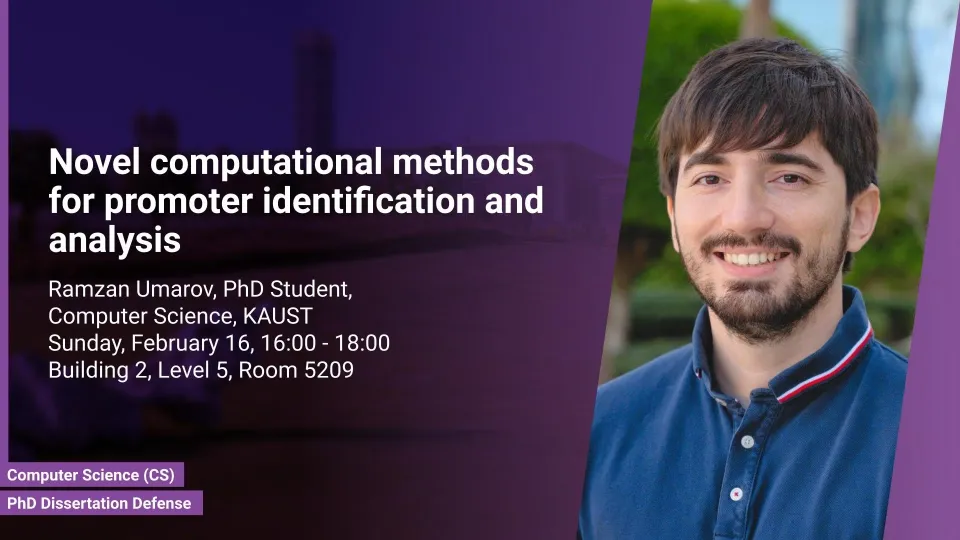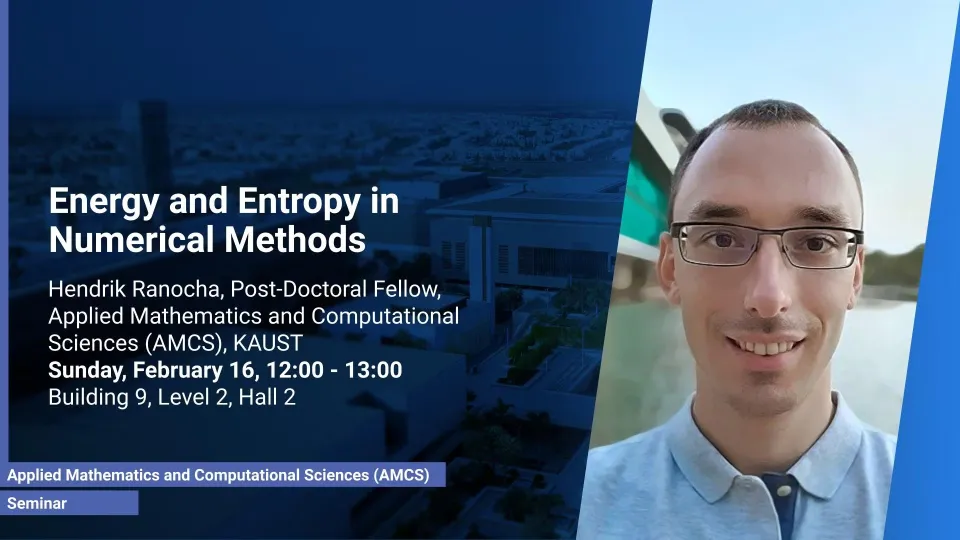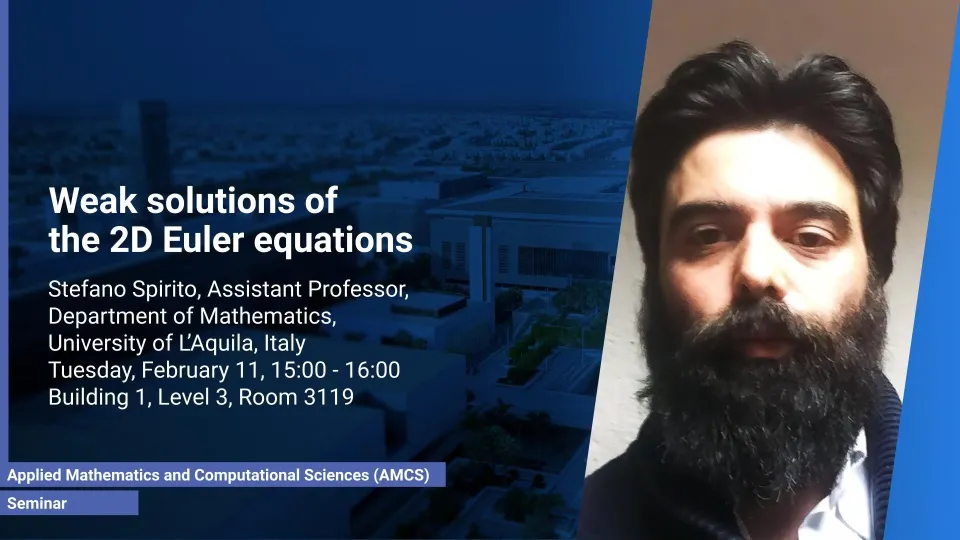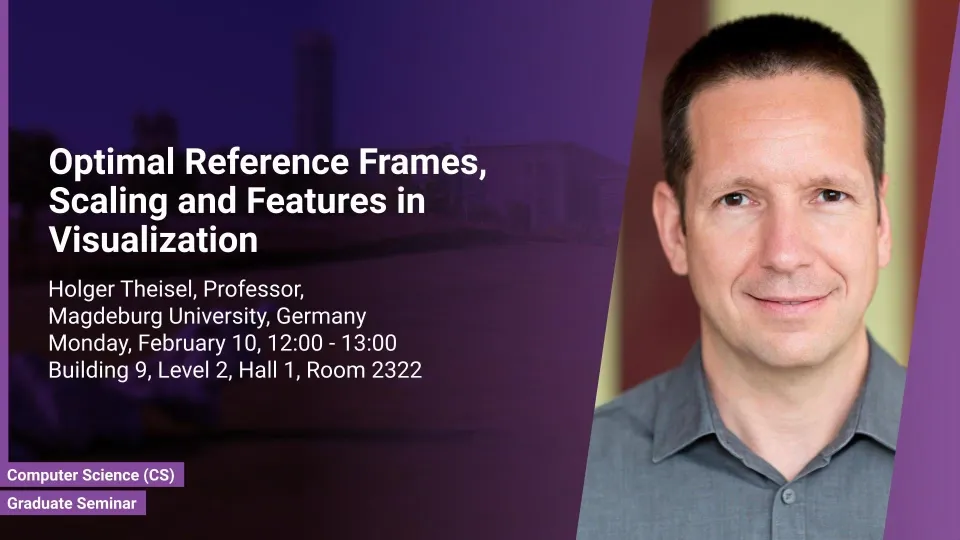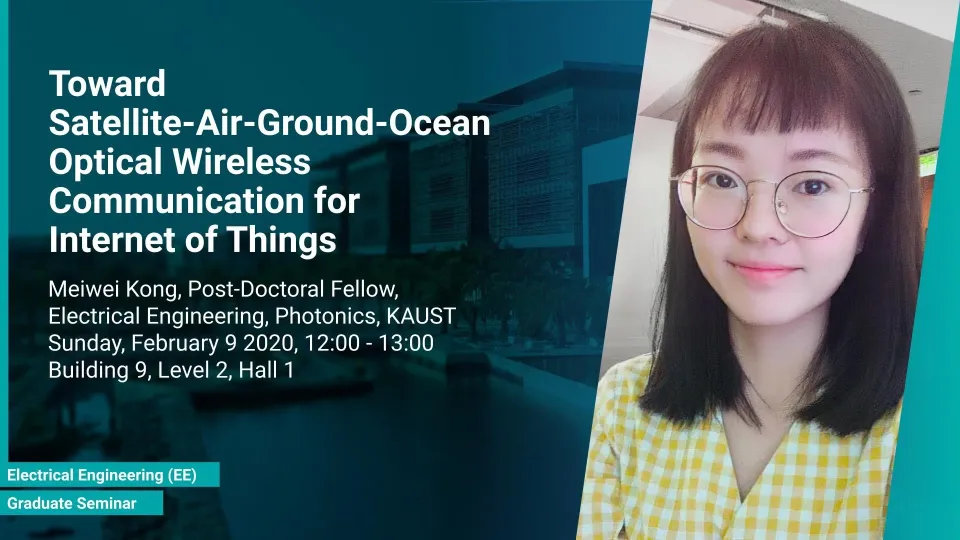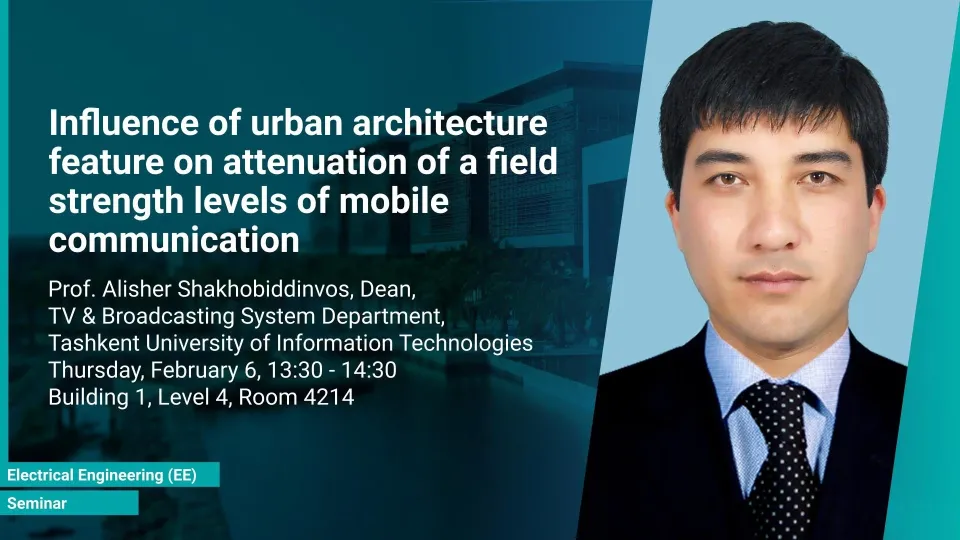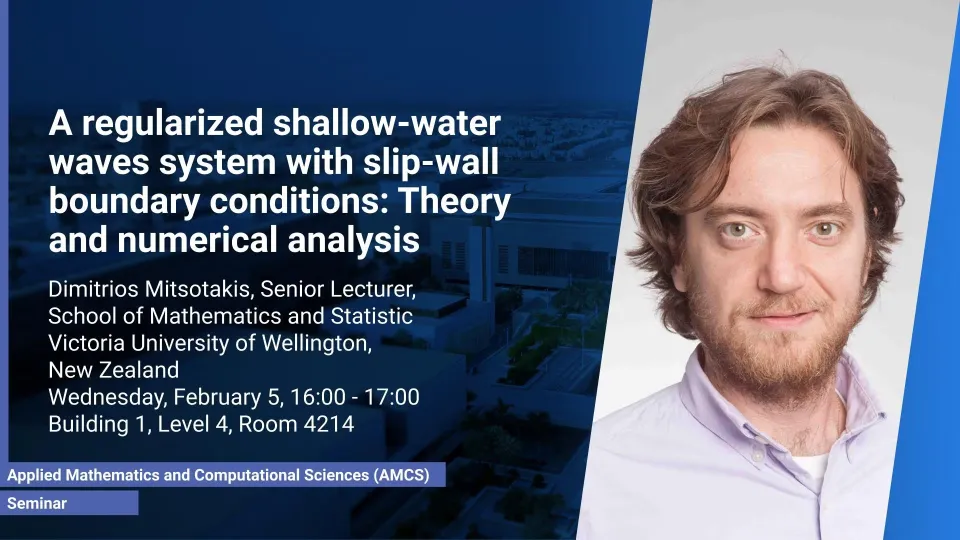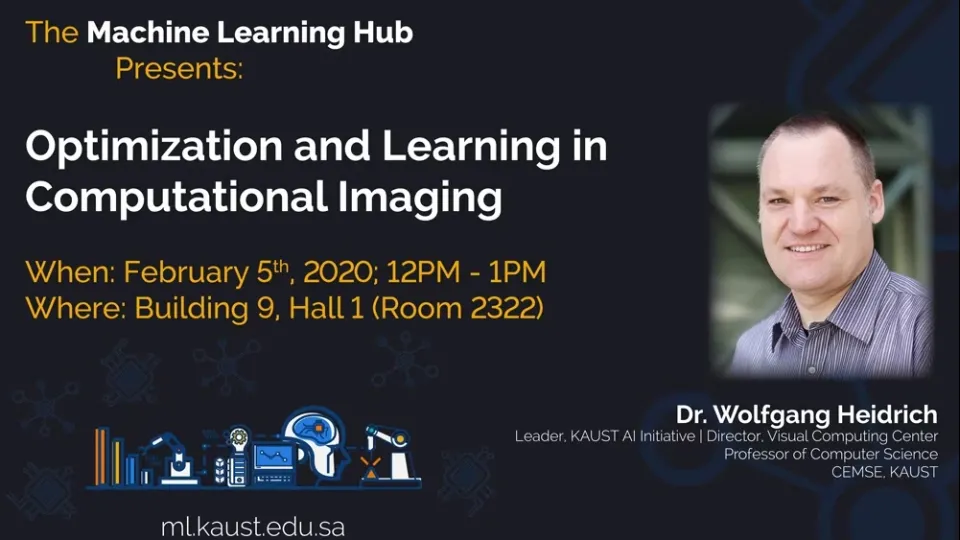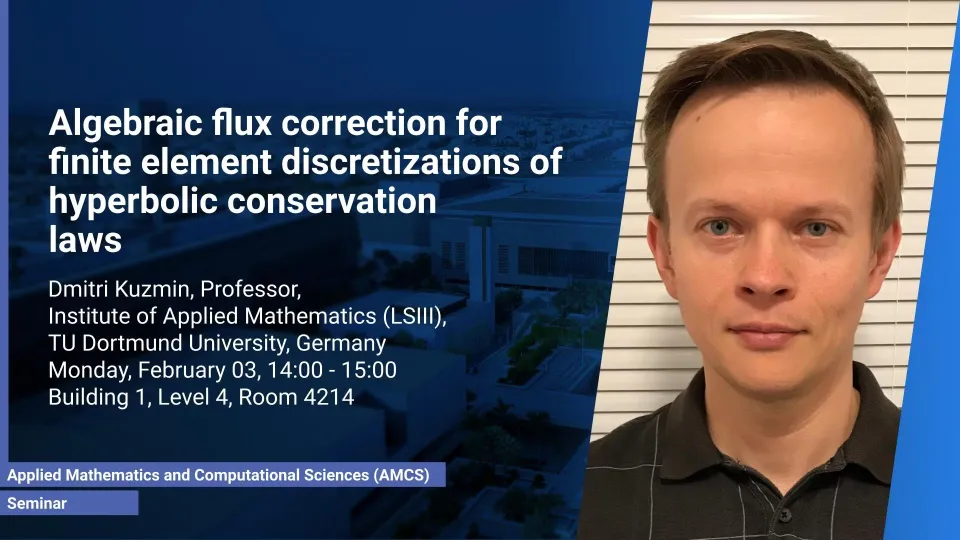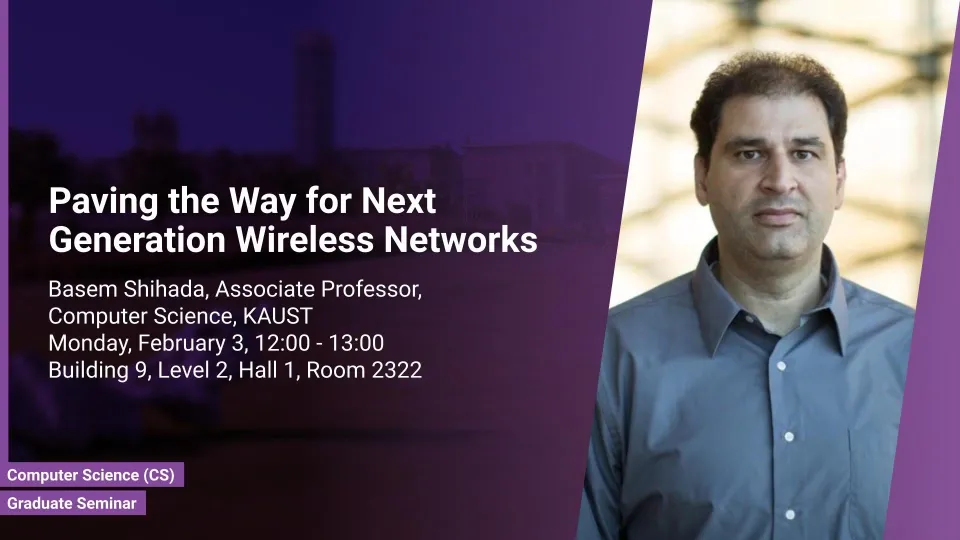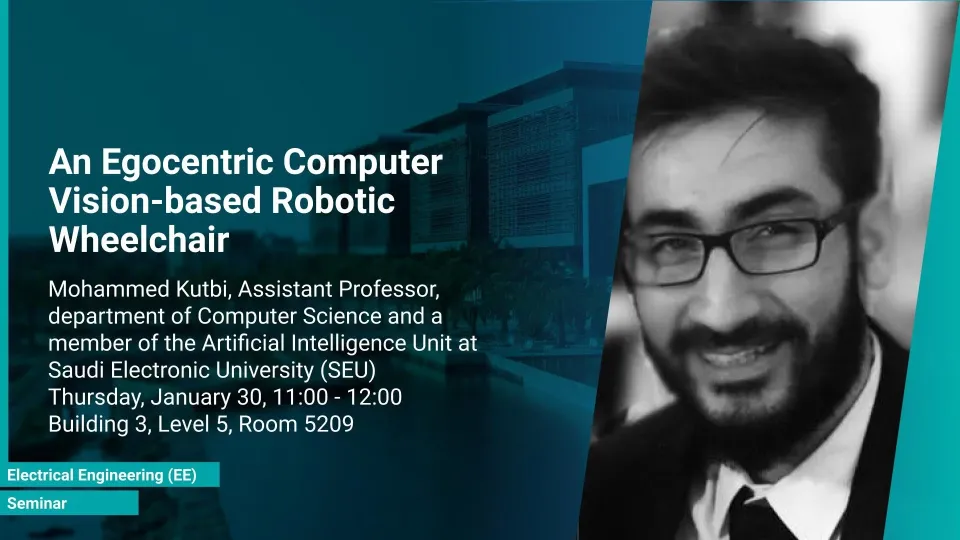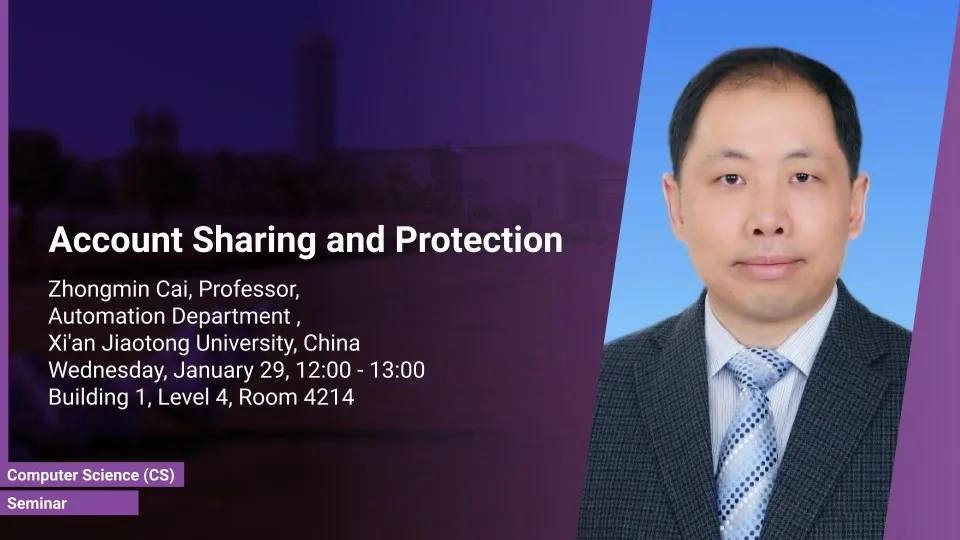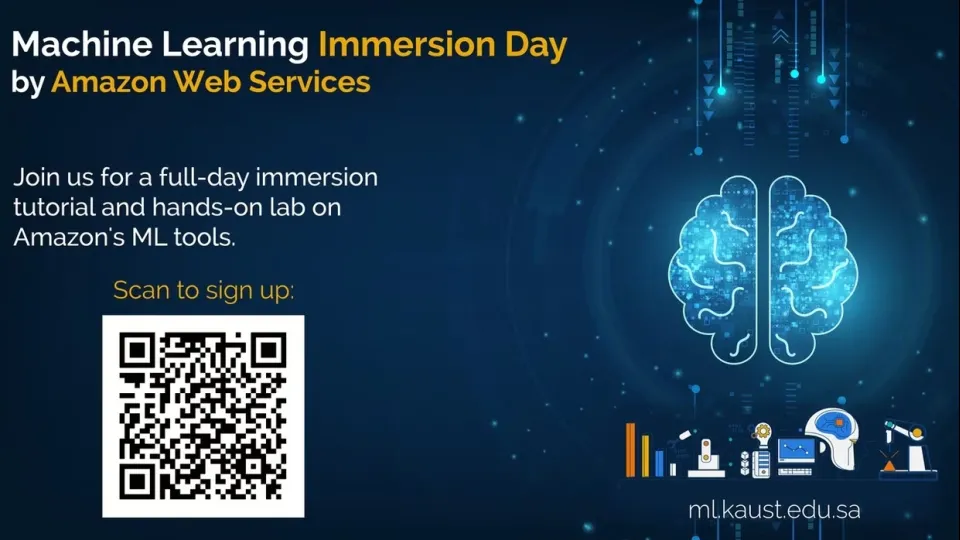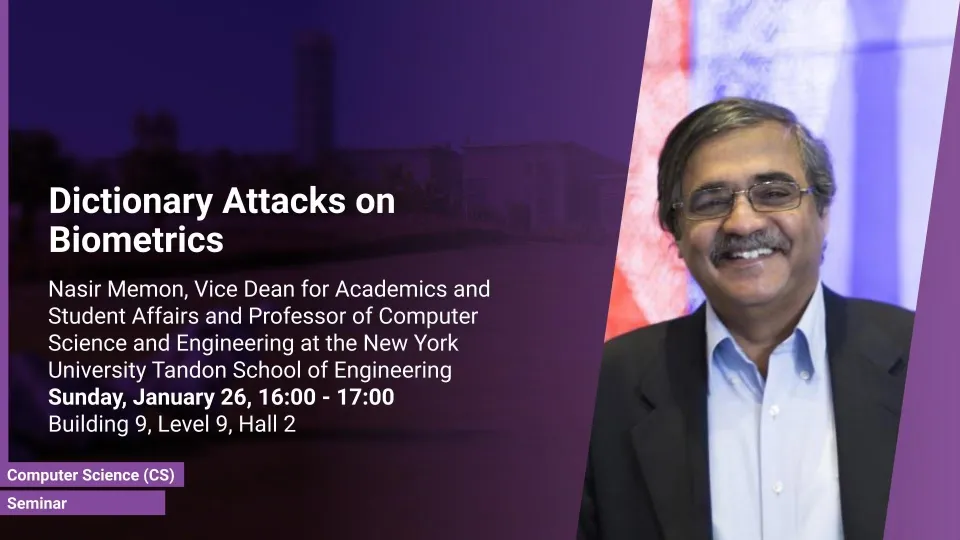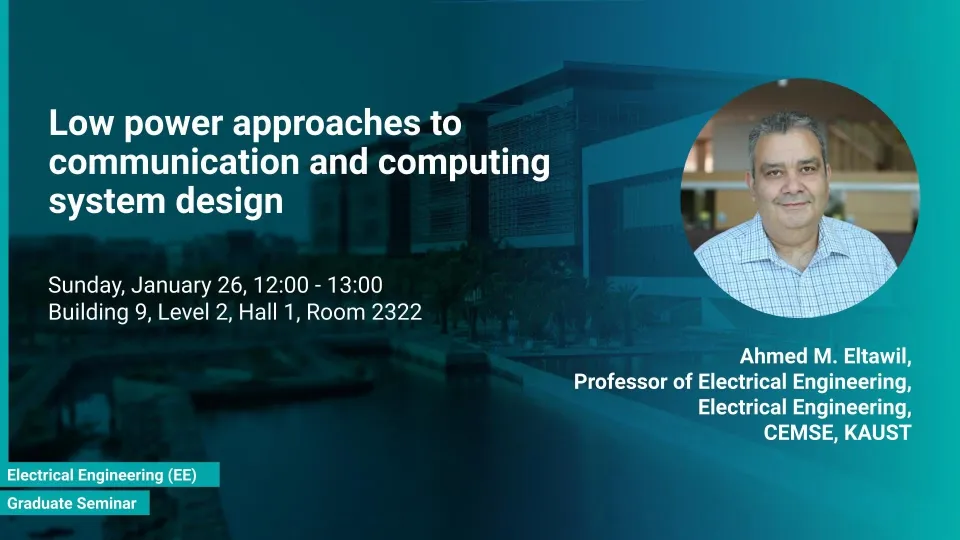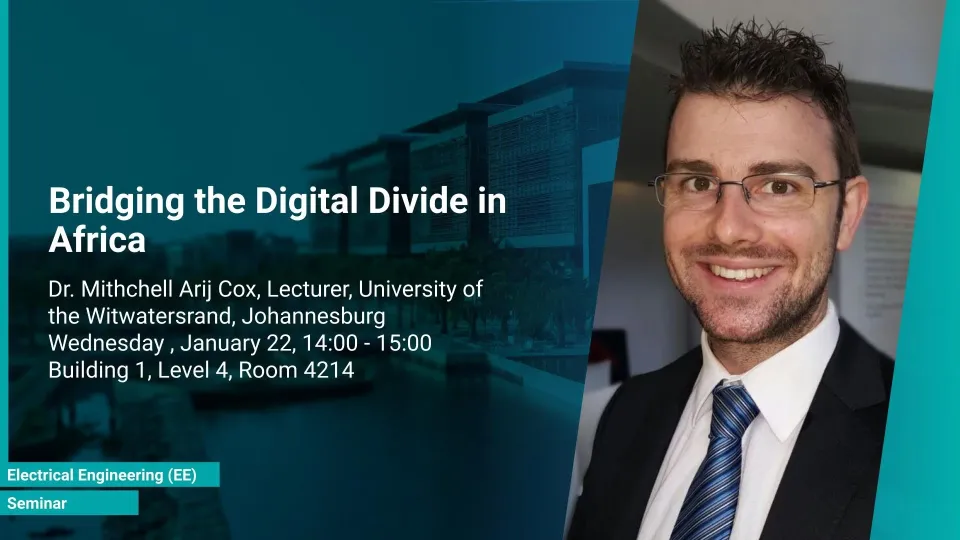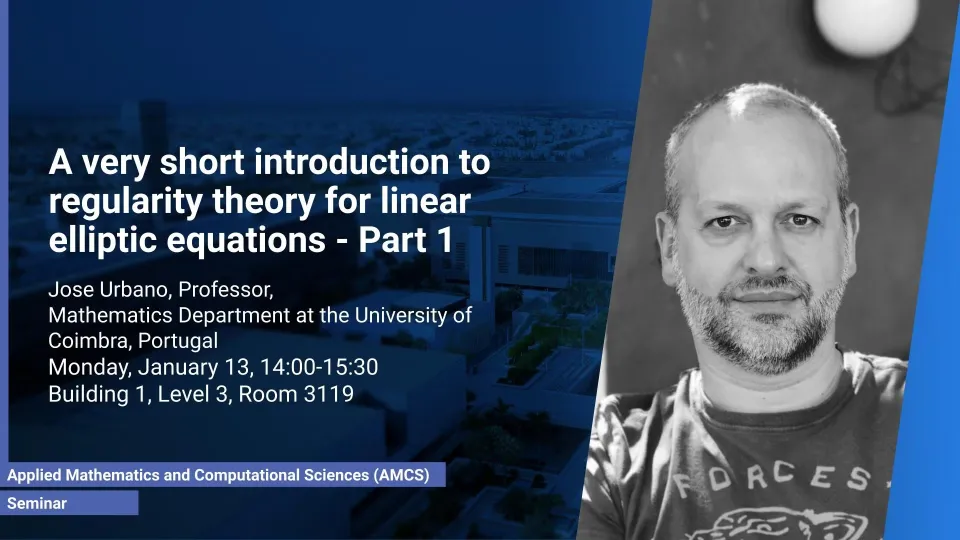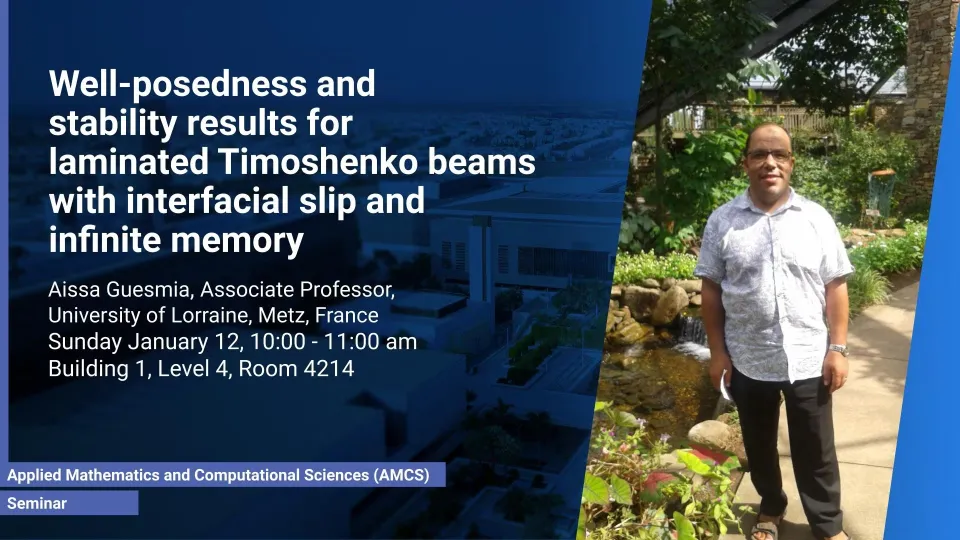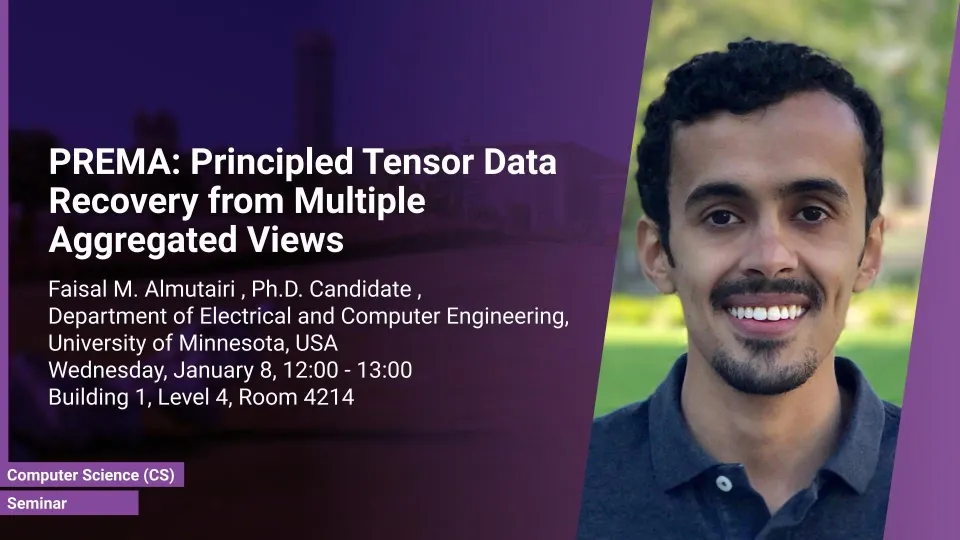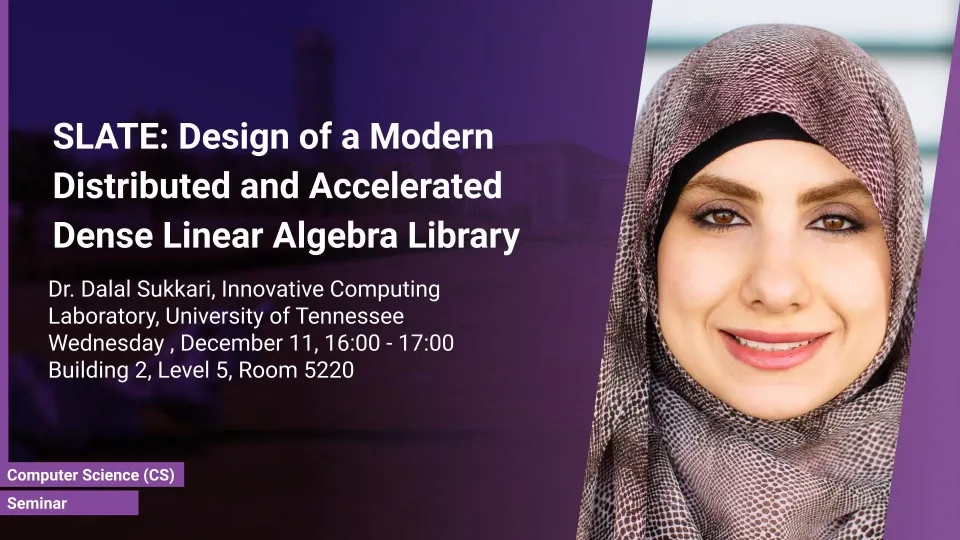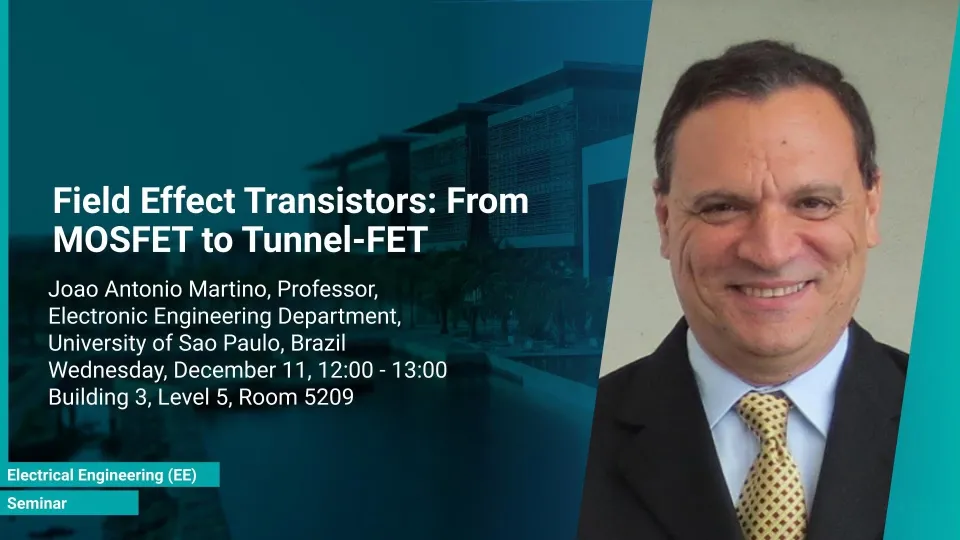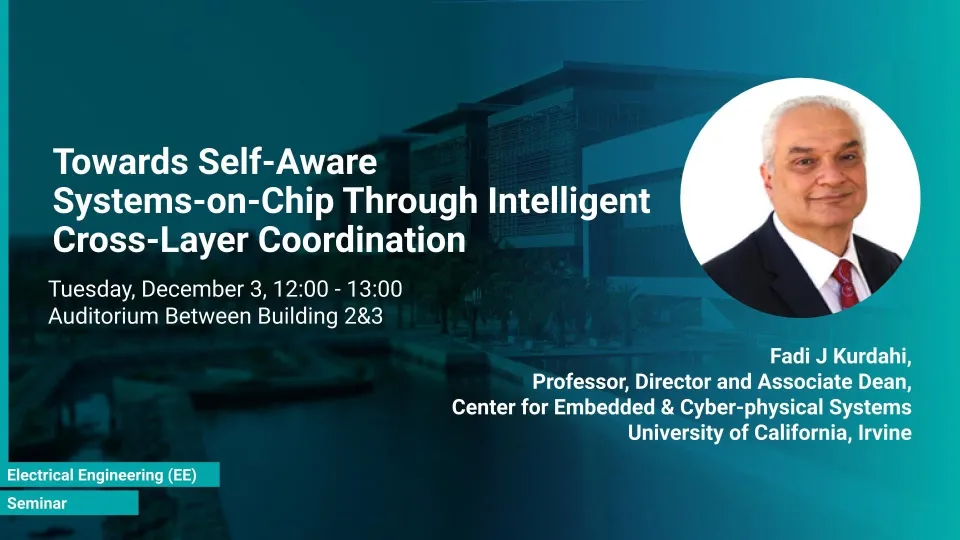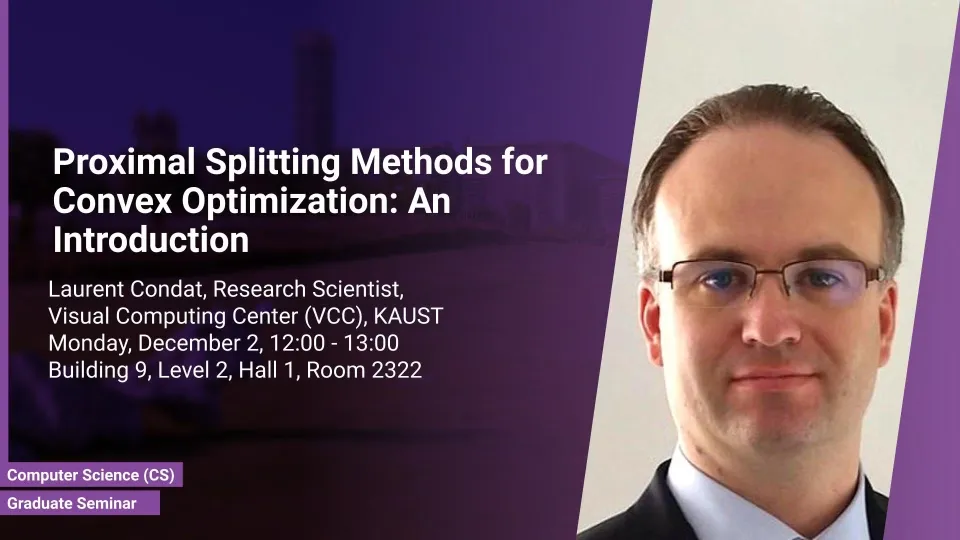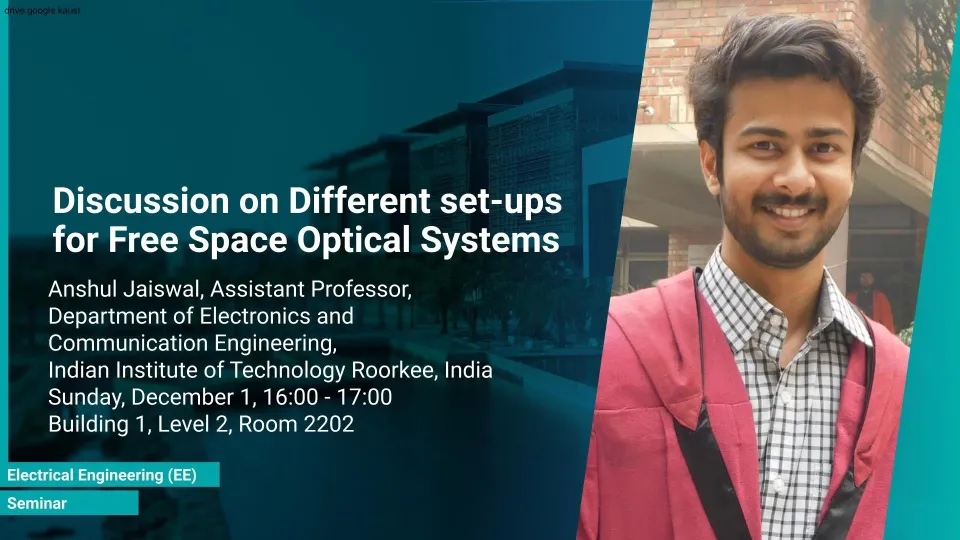Events
Feb 23 - Feb 29, 2020
Multi-layer Red Team vs. Blue Team Methods towards Secure Cyber-Physical Energy Systems
Charalambos (Harrys) Konstantinou, Assistant Professor of Electrical and Computer Engineering with Florida A&M University and Florida State University (FAMU-FSU) College of Engineering
B9 L2 H1
Feb 16 - Feb 22, 2020
Machine Learning Scan of Complete Genome Sequences of 4,500 Rice Varieties reveals Secrets in the Domestication Process of Crops
Takashi Gojobori, Distinguished Professor, Bioscience
B9 L2 H2 R2325
Feb 9 - Feb 15, 2020
Optimal Reference Frames, Scaling and Features in Visualization
Prof. Holger Theisel, Visual Computing, Magdeburg University
B9 L2 H1 R2322
Feb 2 - Feb 8, 2020
Influence of urban architecture features on the attenuation of a field strength levels of mobile communication
Prof. Alisher Shakhobiddinvos, Dean, TV and Broadcasting System Department, Tashkent University of Information Technologies
B1 L4 R4214
A regularized shallow-water waves system with slip-wall boundary conditions: Theory and numerical analysis
Dimitrios Mitsotakis, Senior Lecturer, School of Mathematics and Statistic Victoria University of Wellington, New Zealand
B1 L4 R4214
Geospatial Data Science for Public Health Surveillance - Seminar
Paula Moraga, Lecturer, Department of Mathematical Sciences, University of Bath, UK
B9 L2 H2
Architectural Defenses against Indirect Threats
Yasser Shalabi, Graduate Student, Computer Science, University of Illinois Urbana-Champaign
B9 L2 H2
Jan 26 - Feb 1, 2020
An Egocentric Computer Vision-based Robotic Wheelchair
Mohammed Kutbi, Assistant Professor at the department of Computer Science and a member of the Artificial Intelligence Unit at Saudi Electronic University (SEU)
B3 L5 R5209
Dynamics and Convergence of Weight Normalization for Training Neural Networks
Guido Montufar, Assistant Professor, Departments of Mathematics and Statistics, University of California, Los Angeles (UCLA)
B1 L3 R3119
Account Sharing and Protection
Prof. Zhongmin Cai, Automation Department, Xi’an Jiaotong University, China
B1 L4 R4214
Seeing is Believing? Media Integrity in a Post-Truth World
Prof. Nasir Memon, Vice Dean for Academics and Student Affairs and Professor of Computer Science and Engineering at the New York University Tandon School of Engineering
B9 L2 H1
Amazon Web Services (AWS) ML Immersion Day
Mohib Khan, Hesham Abouelmagd, Shijaz Abdulla (AWS)
B19 H1
Dictionary Attacks on Biometrics
Prof. Nasir Memon, Vice Dean for Academics and Student Affairs and Professor of Computer Science and Engineering at the New York University Tandon School of Engineering
B9 L2 H2
Jan 19 - Jan 25, 2020
Bridging the Digital Divide in Africa
Dr. Mitchell Arij Cox, Lecturer, University of the Witwatersrand, Johannesburg
B1 L4 R4214
A very short introduction to regularity theory for linear elliptic equations - Part 4
Professor Jose Urbano, Department of Mathematics at University of Coimbra, Portugal
B1 L3 R3119
A very short introduction to regularity theory for linear elliptic equations - Part 3
Professor Jose Urbano, Department of Mathematics at University of Coimbra, Portugal
B1 L3 R3119
Jan 12 - Jan 18, 2020
A very short introduction to regularity theory for linear elliptic equations - Part 2
Professor Jose Urbano, Department of Mathematics at University of Coimbra, Portugal
B1 L2 R2202
A very short introduction to regularity theory for linear elliptic equations - Part 1
Professor Jose Urbano, Department of Mathematics at University of Coimbra, Portugal
B1 L3 R3119
Well-posedness and stability results for laminated Timoshenko beams with interfacial slip and infinite memory
Prof. Aissa Guesmia, University of Lorraine, Metz, France
B1 L4 R4214
Jan 5 - Jan 11, 2020
PREMA: Principled Tensor Data Recovery from Multiple Aggregated Views
Faisal M. Almutairi, Ph.D. Candidate, Electrical and Computer Engineering, University of Minnesota
B1 L4 R4214
Dec 29 - Jan 4, 2019
Dec 8 - Dec 14, 2019
Dec 1 - Dec 7, 2019
Towards Self-Aware Systems-on-Chip Through Intelligent Cross-Layer Coordination
Prof. Fadi Kurdahi, Center for Embedded & Cyber-physical Systems University of California, Irvine
B2 B3 A0215
Discussion on Different set-ups for Free Space Optical Systems
Dr. Anshul Jaiswal, Assistant Professor, Electronics Engineering, Indian Institute of Technology Roorkee
B1 L2 R2202
